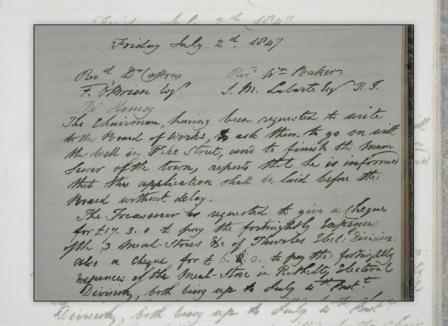 The recently discovered ‘Gratuitous Relief Ration Record Book,’ (or the ‘Distribution Book,’ as it was also called,) for the electoral divisions of Holycross, Thurles and Ballycahill in 1847, has now been digitized, allowing an instant search facility for those anxious to trace their family roots.
The recently discovered ‘Gratuitous Relief Ration Record Book,’ (or the ‘Distribution Book,’ as it was also called,) for the electoral divisions of Holycross, Thurles and Ballycahill in 1847, has now been digitized, allowing an instant search facility for those anxious to trace their family roots.
This book contains the names of those who were classed as paupers in the hinterland / towns-lands of these aforementioned areas, during that most harrowing period of the Great Irish Famine, referred to as ‘Black ’47’.
This extremely rare ‘Rations Record Book,’ contains the names of the heads of each household and in many cases the names of all the adults in each household. It also contains the number of rations each householder was allowed. Details of how, where and when it was located will be discussed here on Thurles.Info later this month.
Just over 3 million Irish people were being supported by outdoor relief in July 1847. To those in the Thurles area it supported, (covering the electoral divisions of Holycross, Thurles and Ballycahill), providing records of food rations distributed during the period May – Sept. `47 and part of `48, it was a very humiliating and an insufficient system. Nevertheless it did keep starvation at bay for a very sizeable portion of Tipperary people at that crucial time in Black ’47.
Meanwhile four other ancient manuscripts, one found close to Thurles here in Co Tipperary are to undergo special preservation work and to be digitized and put on show beside the Book of Kells, in Trinity College, Dublin.
These priceless manuscripts, going back to the fifth and eighth century, will include the eighth century “Book of Dimma,” possibly written originally at St. Crónán‘s Monastery, Roscrea, Co Tipperary.
In 1789, the Book of Dimma was supposedly discovered in a small cave on “The Devils Bit” near Thurles. The little known Book of Dimma, was preserved by Thady O’Carroll, Prince of Ely, and later during possibly the mid-twelfth century was encased in a rich gilt case. The book is a copy of the four Gospels written in Old Latin and is representative of Irish ‘Pocket Gospel’ manuscripts.
The book, which had a blessing dedicated to the sick and dying added in the 10th or 11th century, can be viewed in Trinity College, Dublin, together with many other articles of Ireland’s rich historical treasures found in Tipperary, now bringing prosperity to our capital city’s economy at the expense of Tipperary and indeed mid rural Ireland.
M/s Susie Bioletti, head of conservation at Trinity, said that this funding for the project, obtained from Bank of America Merrill Lynch, is the most generous grant the library has secured for works on early Irish manuscripts and will enable scholarship and public engagement with the manuscripts, sharing these national treasures with our Irish and visitors from abroad.
The funding obtained by Trinity College is part of Bank of America Merrill Lynch’s global art conservation project which has awarded grants to museums in 26 other countries for 71 conservation projects since 2010.

Leave a Reply